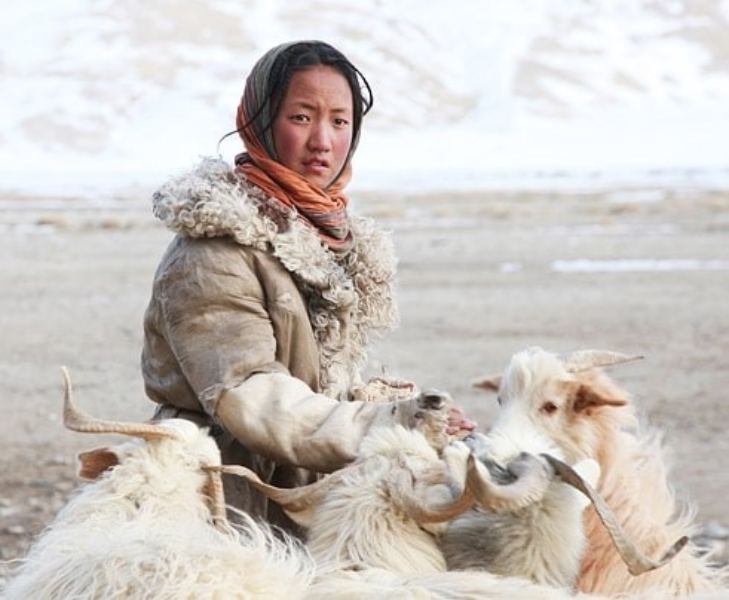
Themes
tribal clothing and textiles
Kos-Kar, ladakh
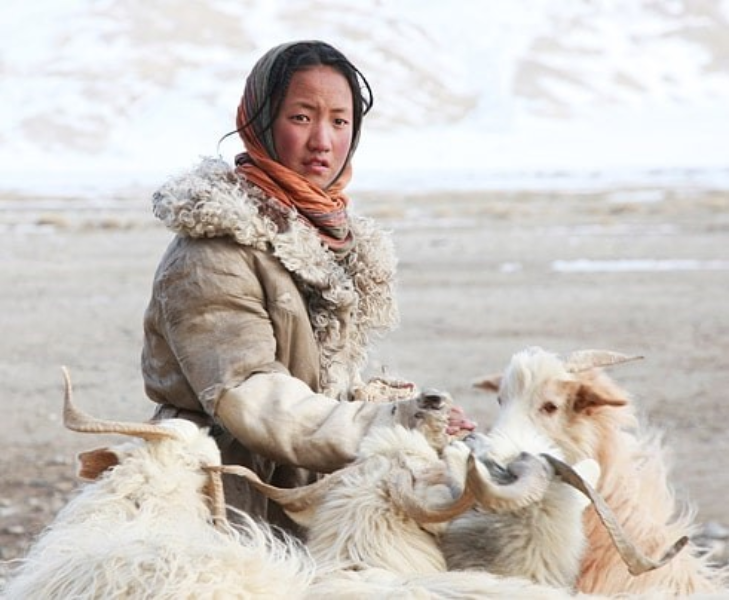
The Kos-Kar are one of the traditional attire of the Changpa people, and a tough woolen cloak for withstanding the biting cold of Ladakh. Accordingly made from the wool of local sheep, it is layered thick and insulating and is often fur side turned inward to keep warmth. An indispensable garment of the Changpa, the Kos-Kar would save its wearers from the harshest possible elements of the Himalayas. The Kos-Kar show that functional and traditional blending has been an important part of Changpa adaptation to the specific climate of high altitudes in Ladakh.
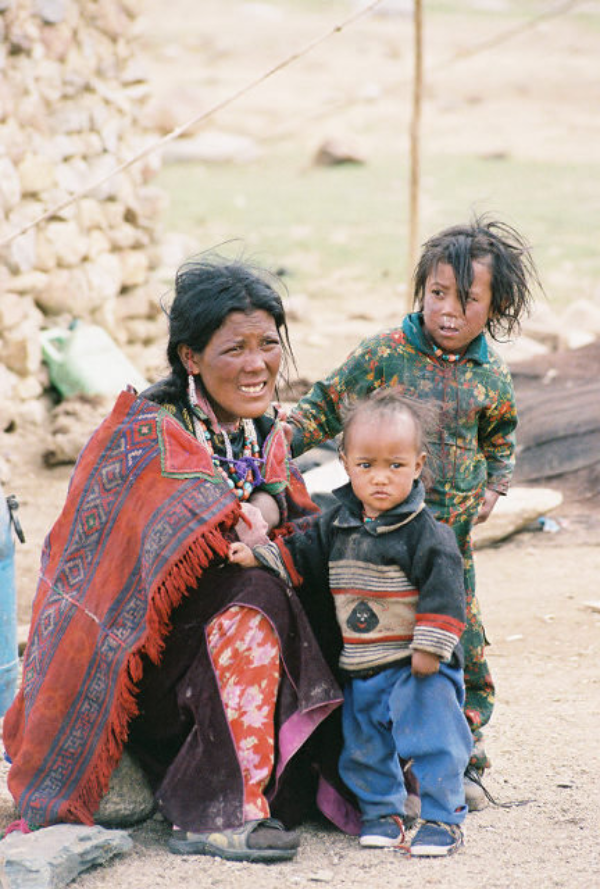
Changpas are semi-nomadic pastoralists living in the Changthang plateau of Tibet. They survive raising livestock, including yaks and the famous pashmina goats, in places as high as 16,000 feet. Survivors of these harsh conditions engage in sheep-rearing pastoralism, producing high-quality pure pashmina wool. These Changpas live in everal tents called Rebos, transported to new locations with the animal herds each season to sustain their lives.
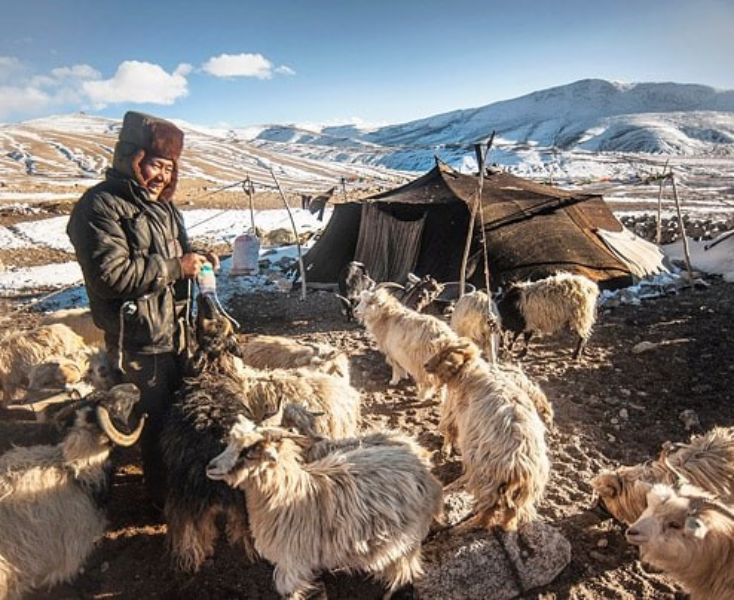
The Kos-Kar embodies the Changpa identity and links practicality to heritage. Worn from dawn to dusk, the garment goes on to connect the wearer to those ancestors who fashioned these clothes as survival tools against the extremes of the plateau. Furthermore, the Kos-Kar stands for a collective resilience and adaptability that have been the hallmarks of Changpa life in an unforgiving land while ensuring a preservation of their nomadic traditions against the onslaught of modern influences.
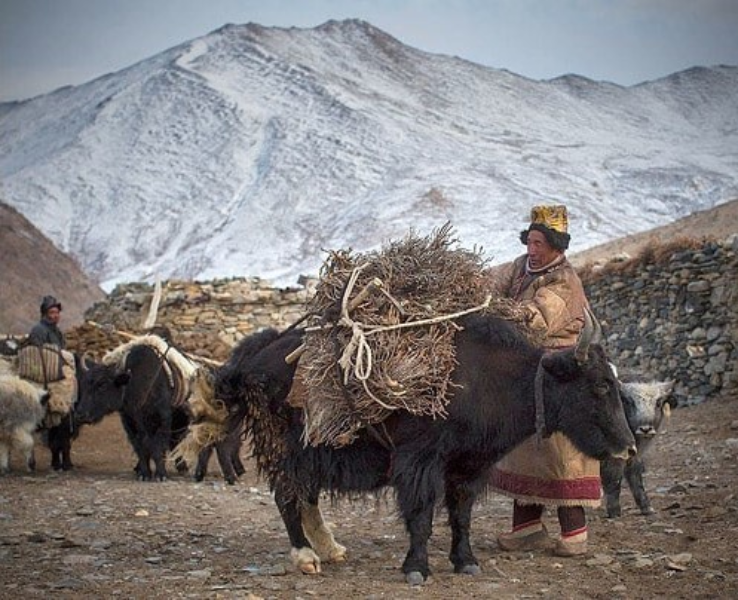
From heavy wool sourced from local sheep, the Kos-Kar keeps users warm very effectively. Often, the fur is placed inside for extra insulation, while the outer wool resists wear and tear. The wool is generally sheared from their own livestock, creating a Kos-Kar that is natural as well as a sustainable clothing choice, improvement on over centuries in the bid to keep warm and more resilient in tough Himalayan climates.
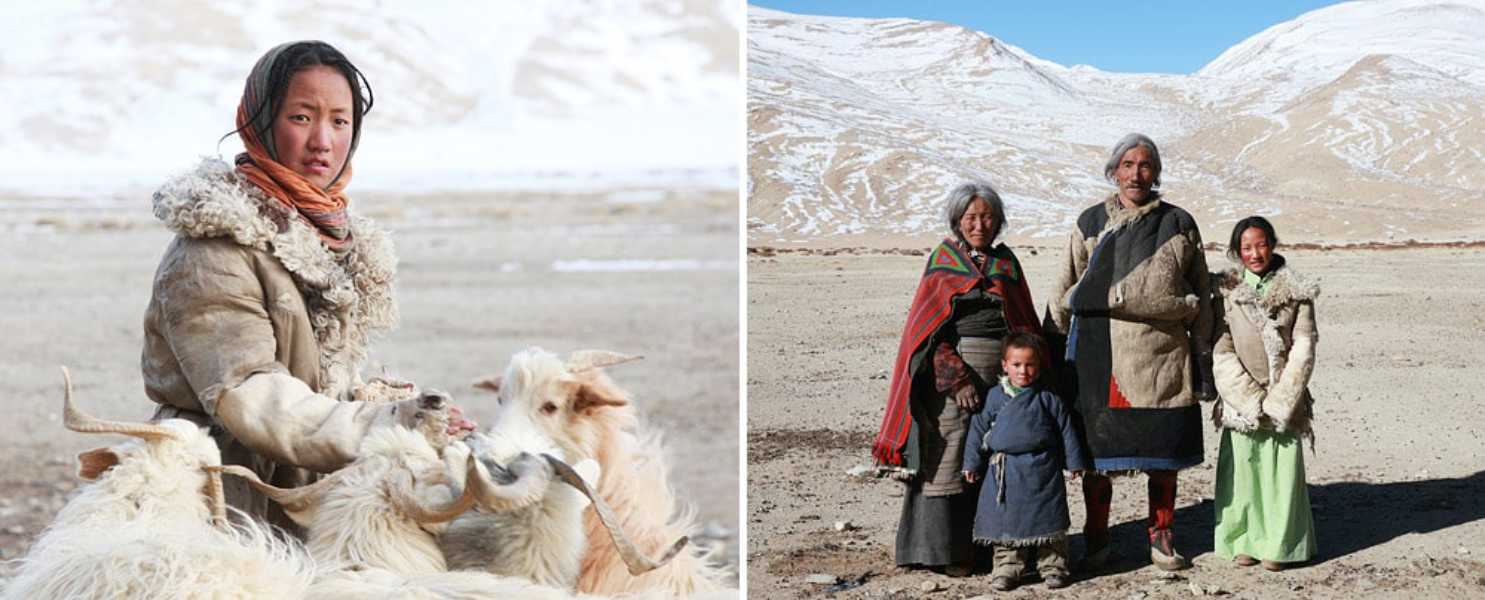
The Kos-Kar bears great significance symbolically, indicating the Changpa's relationship with their animals and land. It is worn every day for protection and self-reliance, which are vital for survival in the barren Changthang. The plain, functional design highlights simplicity and utility, in keeping with the Changpas' minimalistic lifestyle, where resources are used resourcefully, and anything that exists is of consequence in their nomadic life.

